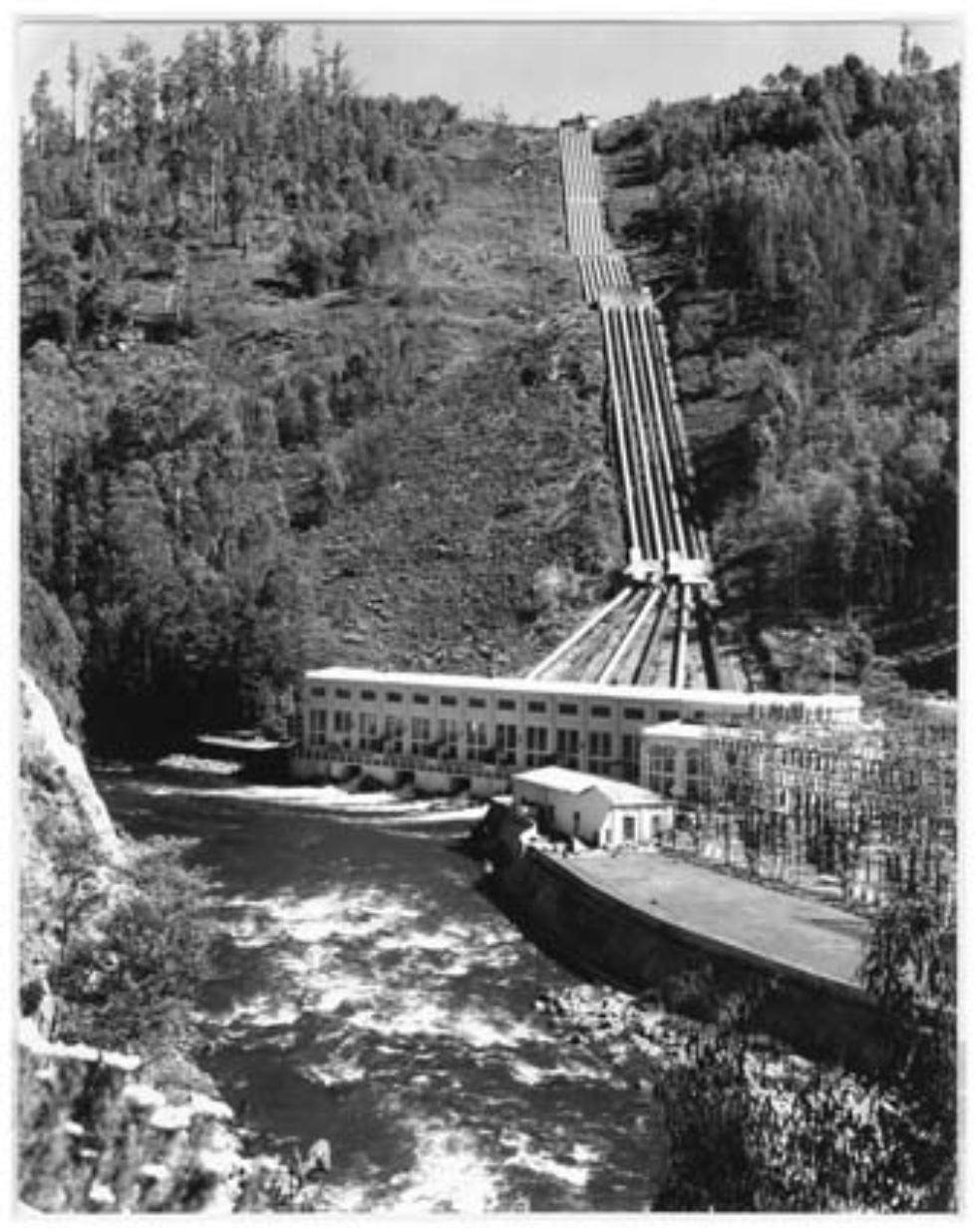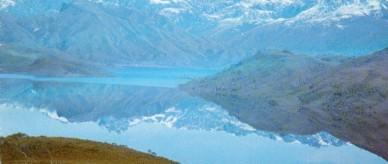


About this record
This black and white photograph shows the hydroelectric power station at Tarraleah on the west bank of Nive River, which flows into the larger River Derwent in Tasmania.
This photograph was taken by Wolfgang Sievers, a well-known photographer who specialised in architectural and industrial photography. It was taken while Sievers was working for the publicity branch of the Department of Trade and Resources.
Hydroelectricity is a way of generating electrical power. The movement of water is used to push the blades of a turbine, which in turn powers a generator. Typical hydroelectric power stations, like the one pictured, have the water flow down from a dam to gates that pass the water through the turbines.
In the 20th Century, hydroelectric power stations became major employers in Tasmania. Many were built after the Second World War, by migrants from across Europe, including Poland and the Netherlands. The drive to build power stations often came from the Tasmanian government, who worked closely with and owned the Hydro-Electric Commission of Tasmania (HEC, now called Hydro Tasmania).
The Derwent was and is an important river for hydroelectricity. From 1934 to 1968, many dams were built along the course of the river. These dams changed the features of the river, including preventing flooding, which was common before the construction of the dams. They also created several new lakes and altered the flow of the river downstream from the dams.
Although there was significant support for hydroelectric dams in Tasmania, there was also resistance. In 1972 the Tasmanian Government built two dams on the Serpentine and Huon rivers that caused the flooding of Lake Pedder. The destruction of this pristine natural area caused outrage among conservationists and some members of the Tasmanian community. The concern this event generated paved the way for the environmental movement that later opposed the Franklin Dam.
Hydroelectricity continues to be central to meeting Tasmania's energy needs. It accounts for over 80 percent of the energy consumed in Tasmania. The generators at Tarraleah, pictured here, produce around 6.5 percent of Hydro Tasmania's total annual production. There are plans underway to redevelop the Tarraleah power station to keep it performing its vital function into the future.
Food for thought
Why might Wolfgang Sievers have taken this photograph of the power station at Tarraleah for the Department of Trade and Resources in 1965?
In recent years, there has been increased interest in hydroelectricity in Australia. Why might this be the case?
What ethical issues might exist when decisions are made about how to use natural resources to generate energy?
Related records
Related themes
Need help with your research?
Learn how to interpret primary sources, use our collection and more.







